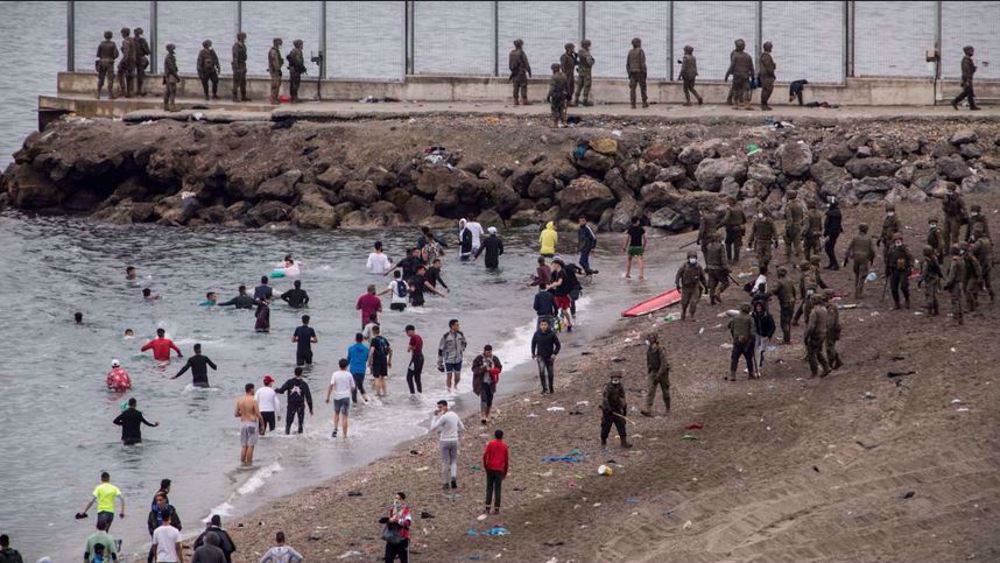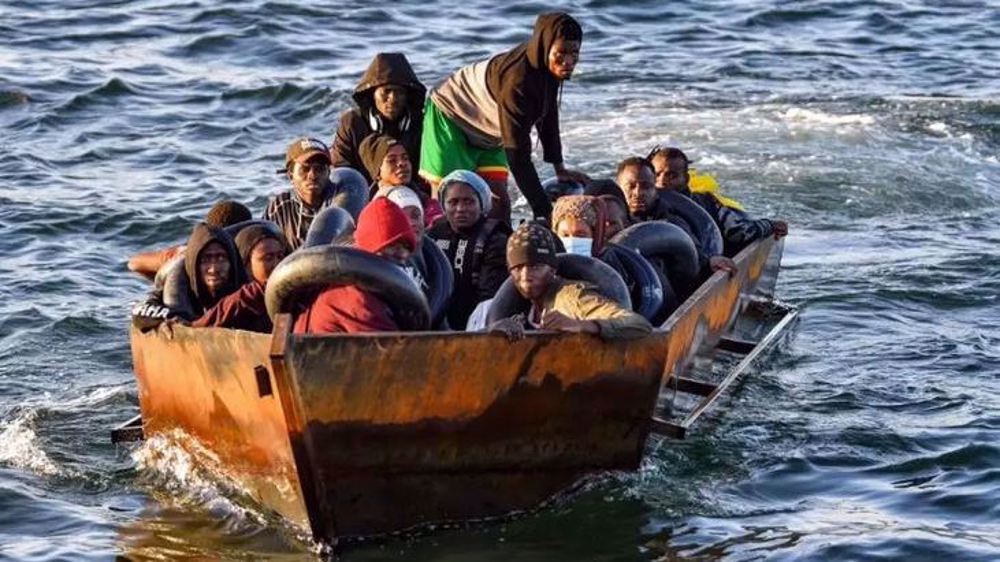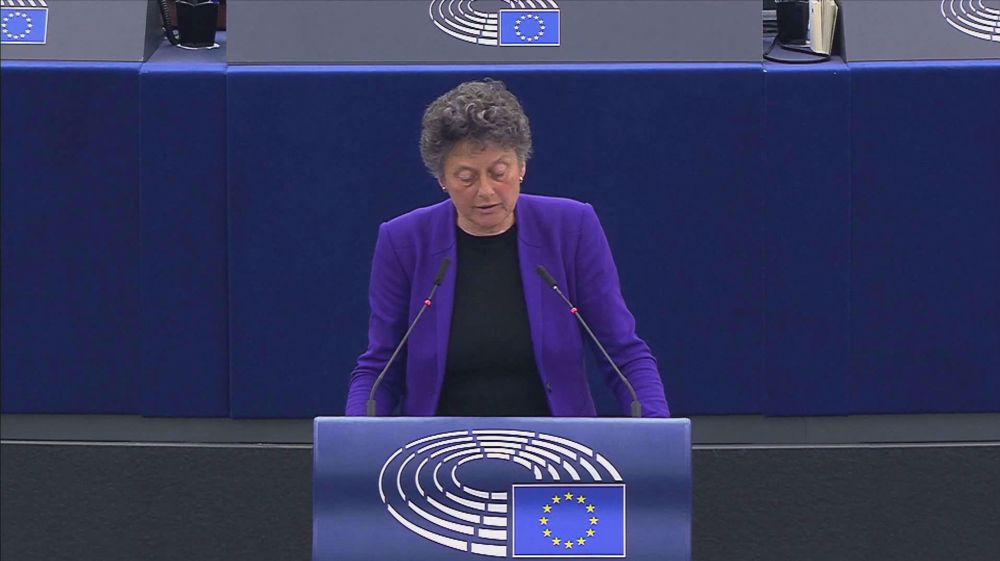Refugee shot in eye by Spain police files complaint to UN
A refugee who was shot in the eye by Spanish police while swimming into the enclave of Ceuta from Morocco has filed a complaint with the UN Committee Against Torture (CAT) over Madrid's failure to investigate the use of anti-riot equipment.
Brice O, the claimant who lost vision in one eye due to the use of rubber bullets by Spanish police on February 6, 2014, says Spain has failed to fulfill its obligation to prevent and investigate mistreatment. The shooting, according to reports, happened before providing any prior warning to the refugees.
“I find it incredibly dangerous that rubber bullets are being used,” said Brice O, who left his native Cameroon as an unaccompanied minor and spent years living in the Moroccan forests near Spain’s other north African enclave, Melilla. “I bear witness as someone disabled in one eye because of a rubber bullet.”
Brice O said something hit his eye as he made for the beach in the inner tube of a tire, and that he was left choking and gasping for air as projectiles hit the water around him.
“Suddenly I felt an intense pain in my face, on my left side, a pain in the eye area,” he said. “I managed to get out of the water but I was really struggling to breathe.”
The young asylum seeker, who was later recognized as a refugee by the office of the United Nations High Commissioner for Refugees (UNHCR) in Morocco and sent to Canada, is currently studying cinematography and film production.
Jorge Fernández Díaz, who was the Spanish interior minister back then, justified the shooting by police, saying the officers fired rubber bullets “at the water, not at people.”
The Spanish government official denied that the actions of the police played any role in the deaths of asylum seekers.
Till now, legal action by the victims against police brutality has been fruitless. A judge dismissed the case against 16 Guardia Civil officers in connection with the incident in October 2015, ruling there was no protocol against police use of anti-riot equipment in water-based environments.
The two Spanish enclaves of Ceuta and Melilla are located in North Africa, bordering Morocco.
They are the EU's only land borders with the African continent, making them safer places to cross into Europe compared to crossing the Mediterranean Sea for would-be irregular migrants seeking to enter the European continent.
However, they are not the only EU territories located geographically outside of Europe, as a lot of the Greek islands and the island of Cyprus are located in Western Asia.
Ceuta, a former Roman colony with a population of 84,000, measures only about 18 square kilometers and lies just across from Spain on the strategic Strait of Gibraltar.
Melilla, measuring about 200 square kilometers, is perched on the eastern edge of Morocco's Mediterranean coast. It has a diverse population of about 87,000, of which around half are Muslims, and thousands of Moroccans go there to work and shop every day.
Thousands of migrants attempted to cross the 12-kilometer border between Melilla and Morocco, or the eight-kilometer border at Ceuta, fleeing violence, poverty and war, started by West's interventions in the African countries.
The two territories are protected by fences fortified with barbed wire, video cameras, and watchtowers. Some of the asylum-seekers trying to breach the barriers have died or been injured.
Iran strongly condemns deadly terrorist attack targeting worshippers in Syria’s Homs
Israel recognizes Somaliland as state, drawing international condemnation
VIDEO | Press TV's news headlines
VIDEO | Pakistan signs major defense export deal with Libya
VIDEO | Gaza children at Al-Nour school call for caravans to restore education
Critical Gaza hospital runs out of fuel, suspends most services
Yemen says ready for next inevitable war, urges Muslims to be vigilant
West uses sanctions to cling to fading dominance: Moscow












 This makes it easy to access the Press TV website
This makes it easy to access the Press TV website